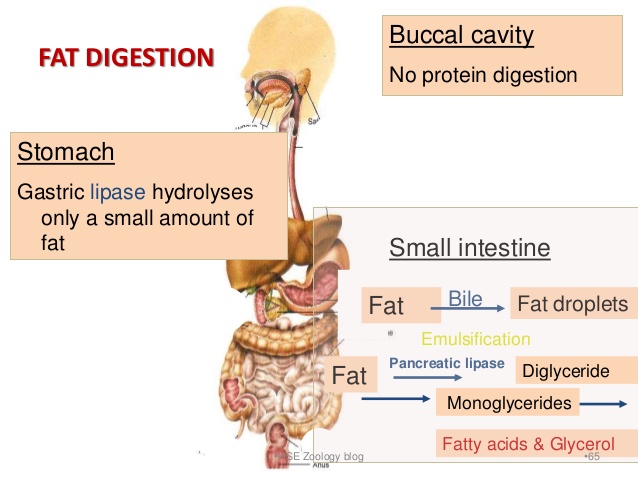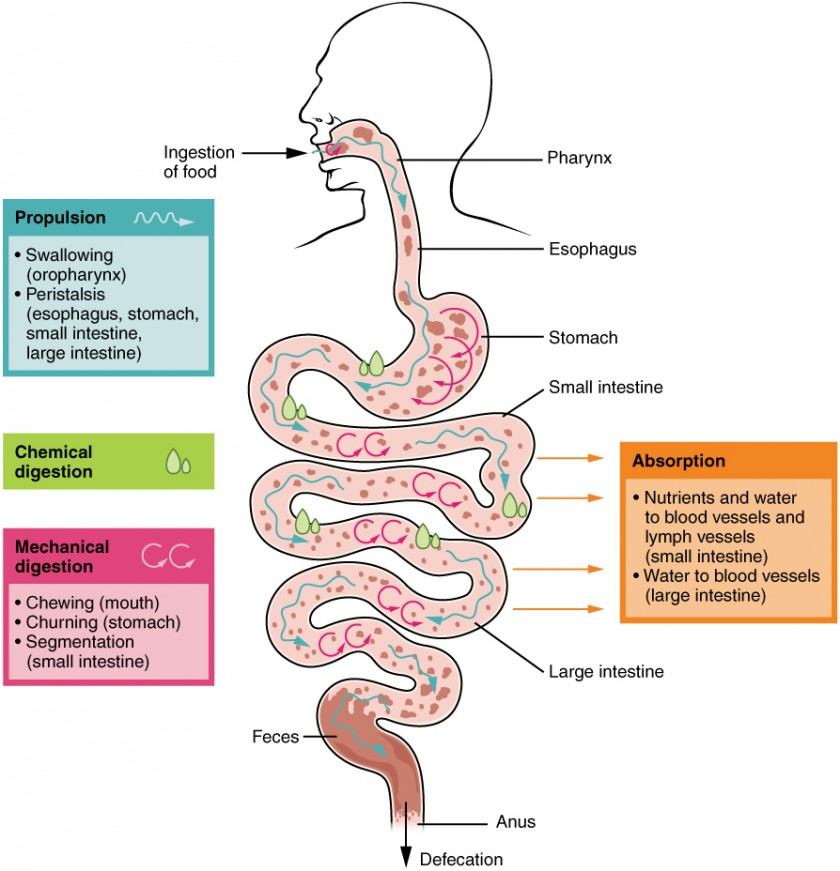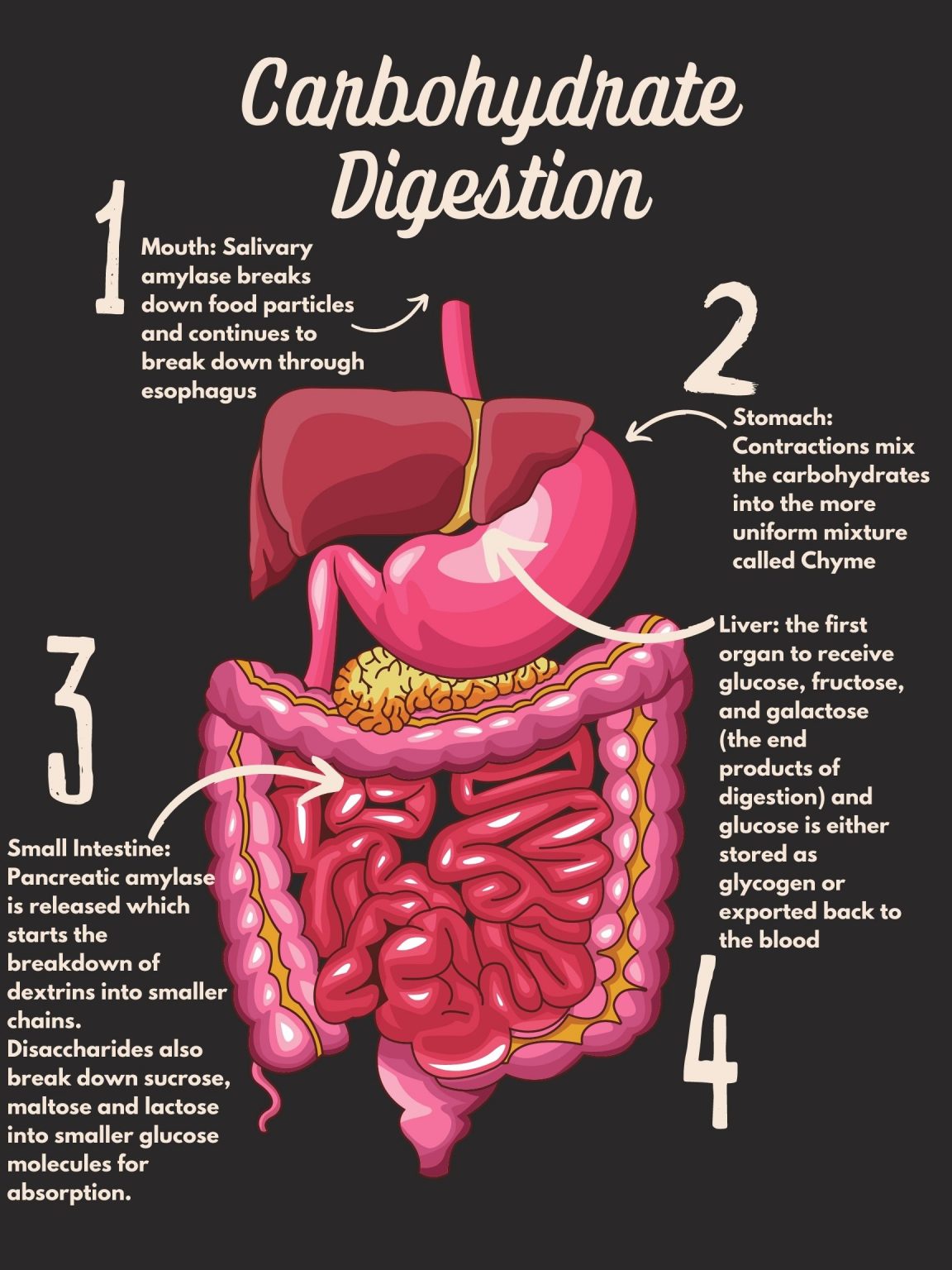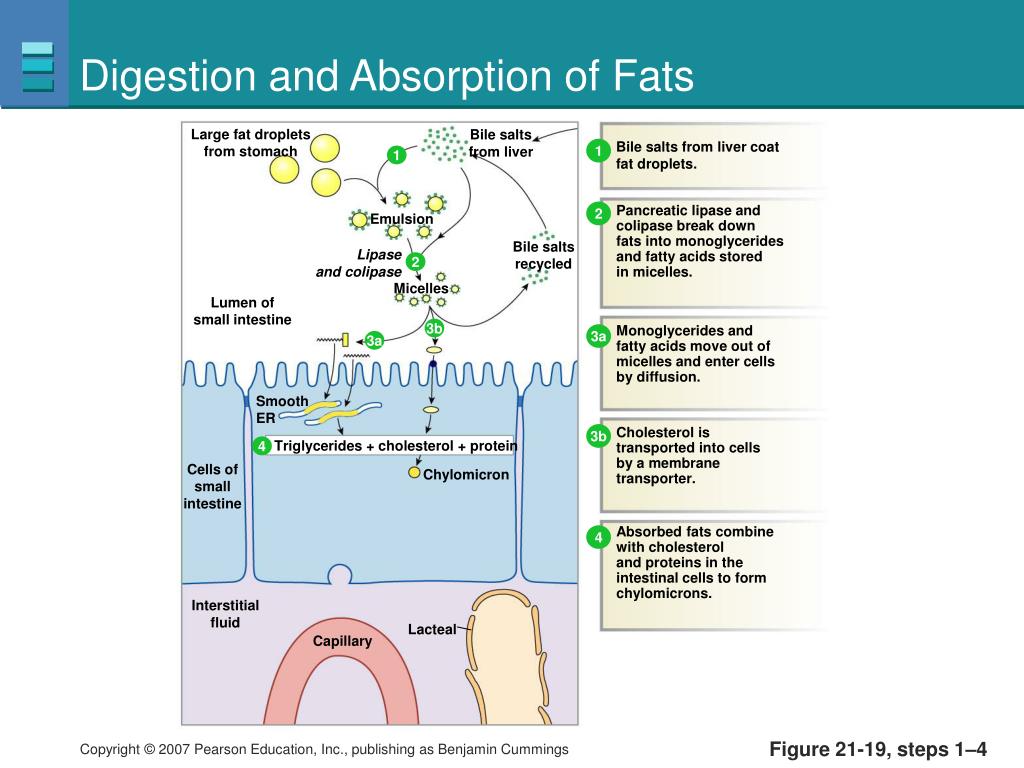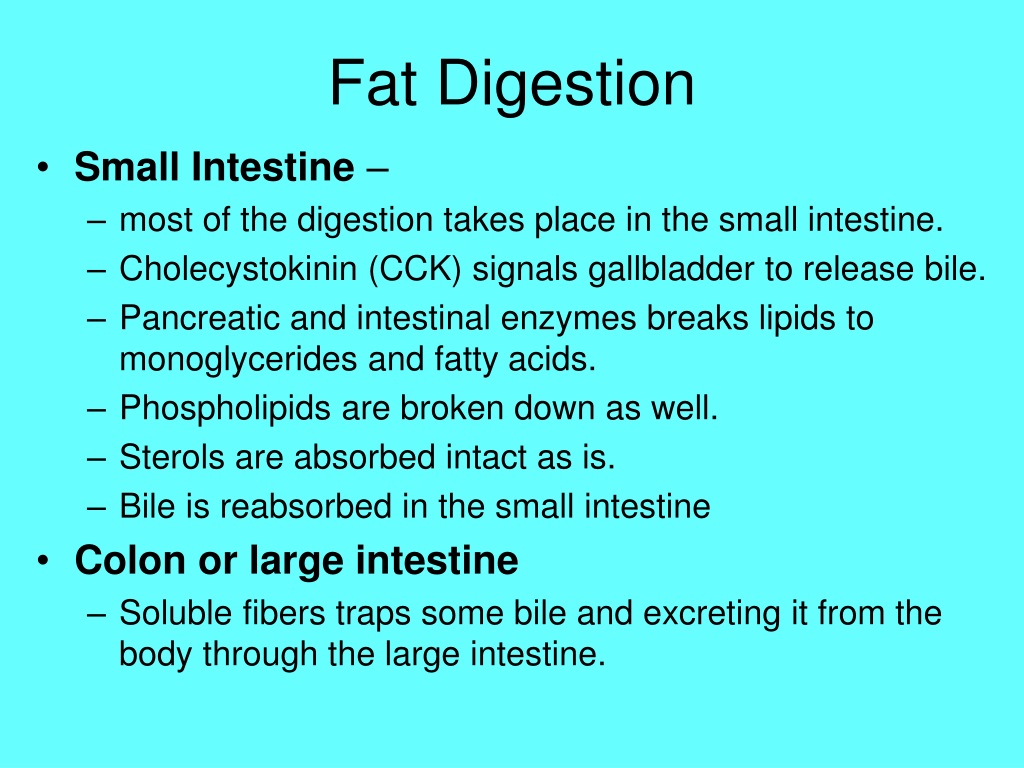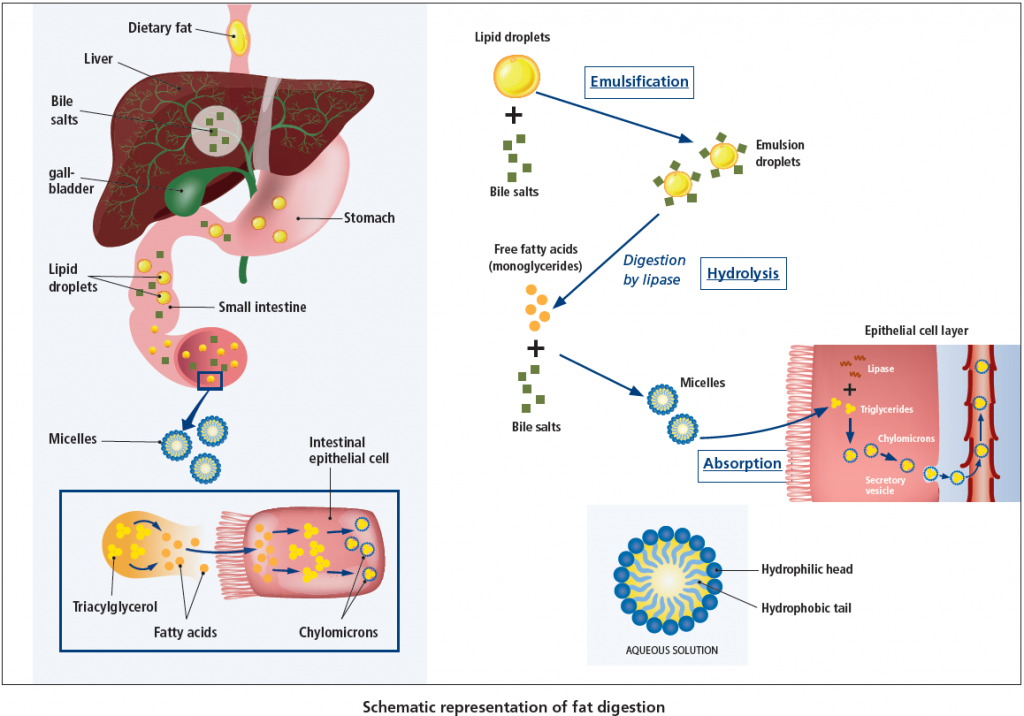Where Does The Majority Of Fat Digestion Take Place
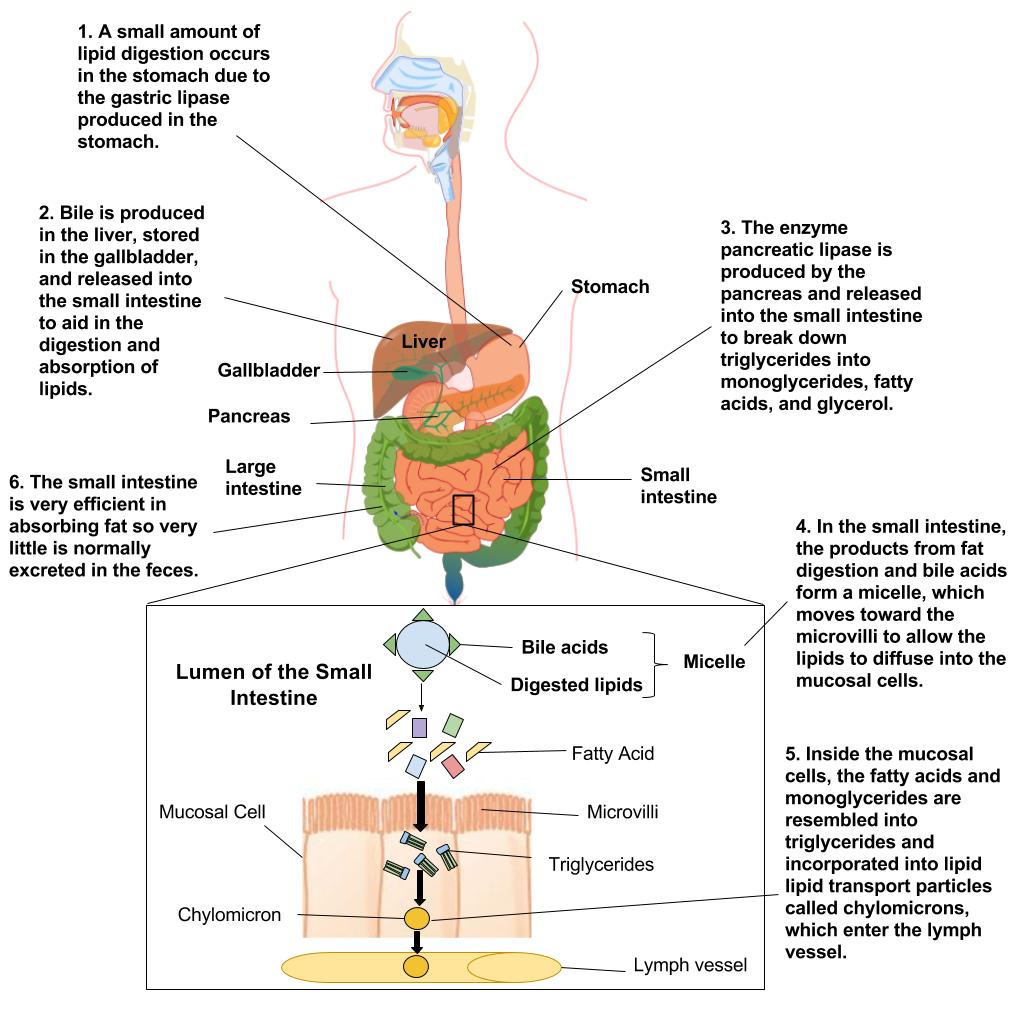
Breaking news: For decades, misconceptions have clouded a fundamental aspect of human physiology. The primary site of fat digestion isn't where most people think.
The small intestine, not the stomach, is the workhorse of fat digestion. This revelation challenges outdated assumptions and highlights the complexity of the digestive process.
The Small Intestine's Dominance
The small intestine is where the bulk of fat digestion occurs, thanks to a coordinated effort involving enzymes and bile. This organ handles the lion's share of breaking down dietary fats.
Specifically, the duodenum, the first section of the small intestine, is crucial. Here, fats encounter bile, produced by the liver and stored in the gallbladder.
Bile emulsifies fats, breaking them into smaller droplets. This emulsification dramatically increases the surface area available for enzyme action.
The Role of Lipase
Lipase, an enzyme primarily secreted by the pancreas, is the key player in fat digestion. It breaks down triglycerides into monoglycerides and fatty acids.
These smaller molecules can then be absorbed by the intestinal cells. The pancreas delivers lipase to the small intestine, ensuring efficient fat breakdown.
According to a study published in the American Journal of Physiology-Gastrointestinal and Liver Physiology, pancreatic lipase accounts for the vast majority of fat digestion.
Why Not the Stomach?
While the stomach does contribute to digestion, its role in fat breakdown is minimal. The stomach primarily focuses on protein digestion.
Gastric lipase, present in the stomach, has a limited capacity. It can only break down a small percentage of ingested fats, particularly short-chain triglycerides.
The acidic environment of the stomach also inhibits the activity of most lipases. Therefore, the stomach is not designed to be the primary site of fat digestion.
The Absorption Process
Once fats are broken down, the small intestine efficiently absorbs the resulting fatty acids and monoglycerides. These are then packaged into chylomicrons.
Chylomicrons are lipoprotein particles that transport fats through the lymphatic system. They eventually enter the bloodstream, delivering fats to various tissues.
The ileum, the final section of the small intestine, also plays a role in absorption. It ensures that any remaining fats are captured before waste is eliminated.
Who's Affected by This Knowledge?
This information is critical for individuals with pancreatic insufficiency. Conditions like cystic fibrosis and chronic pancreatitis can impair lipase production.
Patients with these conditions may struggle to digest fats, leading to malabsorption and nutritional deficiencies. Understanding the site of fat digestion is vital for developing effective treatments.
Healthcare professionals can use this knowledge to tailor dietary recommendations and enzyme replacement therapies. Improving fat digestion enhances overall health and well-being.
When Did This Understanding Emerge?
While some aspects of fat digestion were understood earlier, the precise quantification of the small intestine's role became clearer through advanced research in the late 20th and early 21st centuries.
Studies using sophisticated enzyme assays and intestinal perfusion techniques provided conclusive evidence. These studies highlighted the dominance of pancreatic lipase and the efficiency of the small intestine.
Ongoing research continues to refine our understanding of the complex interplay of enzymes, bile, and intestinal cells. This continuous investigation drives improvements in digestive health.
How Can This Knowledge Be Applied?
For individuals with digestive issues, focusing on strategies to optimize small intestine function is crucial. This may involve dietary modifications and enzyme supplementation.
Consuming a balanced diet with adequate fiber can support healthy gut function. Avoiding excessive amounts of processed foods and unhealthy fats can also be beneficial.
Consulting with a registered dietitian or gastroenterologist is recommended for personalized guidance. Professionals can help individuals develop a tailored plan to address their specific needs.
Ongoing Developments
Research continues to explore novel strategies for enhancing fat digestion. Scientists are investigating new enzyme formulations and delivery methods.
Targeted therapies aimed at improving bile production and intestinal absorption are also under development. These innovations hold promise for improving the lives of individuals with digestive disorders.
Stay tuned for further updates as research progresses and new insights emerge. Understanding the intricacies of fat digestion is essential for promoting optimal health.
